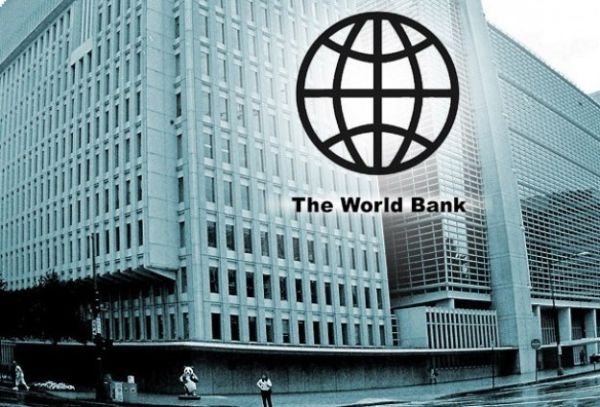
by admin | May 25, 2021 | World
 Washington : Governments around the world implemented a record 314 business reforms in “bureaucracy busting efforts” over the past year, the World Bank Group said in a report on Wednesday.
Washington : Governments around the world implemented a record 314 business reforms in “bureaucracy busting efforts” over the past year, the World Bank Group said in a report on Wednesday.
Afghanistan, Djibouti, China, Azerbaijan, and India are among the top 10 improvers of business climate in this year’s assessment, thanks to their efforts in reforms, said the report titled “Doing Business 2019: Training for Reform”, reports Xinhua news agency.
China moved up more than 30 places to the 46th position in the global rankings, as the country undertook the largest number of reforms in the East Asia and Pacific region, the report said.
The 314 reforms, carried out in 128 economies between June 2017 and May 2018, exceeded the previous all-time high of 290 reforms two years ago. These reforms have benefited small and medium enterprises as well as entrepreneurs, created jobs and stimulated private investment, it added.
“Fair, efficient, and transparent rules, which Doing Business promotes, are the bedrock of a vibrant economy and entrepreneurship environment,” said World Bank Group President Jim Yong Kim.
“It’s critical for governments to accelerate efforts to create the conditions for private enterprise to thrive and communities to prosper.”
A case study in the report found that mandatory and annual training for relevant officials is associated with more efficient business and land registries, indicating the need to complement the reform agendas with training programmes.
In the World Bank’s annual ease of doing business rankings, New Zealand, Singapore and Denmark retained the top three spots for a second consecutive year.
—IANS

by admin | May 25, 2021 | Banking, Economy, Finance, Markets, News
 New Delhi : The World Bank Group (WBG) on Friday approved its largest country program for India with a likely assistance of $25-30 billion by fiscal 2021-22 to help India’s transition to a higher middle-income country.
New Delhi : The World Bank Group (WBG) on Friday approved its largest country program for India with a likely assistance of $25-30 billion by fiscal 2021-22 to help India’s transition to a higher middle-income country.
“With a fast growing economy, global stature, and its unique experience of lifting the highest number of poor out of poverty in the past decades, India is well-positioned to become a high middle-income country by 2030,” World Bank South Asia Vice President Hartwig Schafer said.
The WBG Board endorsed a new Country Partnership Framework (CPF) for India aimed at supporting India’s transition by addressing its key development priorities — resource efficient and inclusive growth, job creation and building its human capital.
“The Group expects to deliver $25-30 billion during this CPF period, ending in FY 2022,” the multilateral lending agency said in a statement.
India, which has strong collaboration with Group’s institutions, is the largest client of International Bank for Reconstruction and Development (IBRD). As of mid-September 2018, total World Bank assistance stood at $27.2 billion representing 104 projects.
At the end of July 2018, International Finance Corporation’s (IFC) India portfolio contained 281 projects, amounting to a committed exposure of $6.4 billion.
“This CPF charts a path for how the World Bank, IFC and MIGA (Multilateral Investment Guarantee Agency), will leverage their relative strengths to deliver stronger development outcomes for this dynamic country, half of whose population is under the age of 25,” Schafer said.
India’s Economic Affairs Secretary S.C. Garg complemented the bank for aligning the CPF with India’s development and investment objectives, the statement said.
The WBG will focus on promoting a resource efficient growth path, mainly in the use of land and water, to remain sustainable; enhancing competitiveness and job creation; and investing in health, education and skills to improve human capital.
It will also address the challenge of air pollution, jobs for women, raising the resilience of financial sector and investing in early years of children’s development. It will harness new technology in all spheres.
The CPF highlights the shift from a “lending” to a “leveraging bank”, emphasizing the growing potential and need to draw in capital markets in the financing of development priorities, the World Bank statement said.
Complementing transformational national programs, the bank will also develop strategic state partnerships to address state-specific development priorities.
“The future of India lies in the states of India. The country’s transition to high middle-income status will be determined in large part by the effectiveness of India’s federal compact,” said Junaid Ahmad, Country Director, World Bank India.
The CPF also emphasises on India’s global leadership role in promoting renewable energy and disaster resilient infrastructure development through its “Lighthouse India” initiative. India’s experience will help countries in Africa and Central Asia, it said.
—IANS

by admin | May 25, 2021 | World

World Bank Chief Executive Officer Kristalina Georgieva
New Delhi : Three densely populated regions of the world, including South Asia, could see internal climate migrants of over 140 million people in the next three decades if climate change impacts continue, a new World Bank Group report finds.
The report, “Groundswell — Preparing for Internal Climate Migration”, released on Monday, finds that unless urgent climate and development action is taken globally and nationally, the three regions — Sub-Saharan Africa, South Asia and Latin America — together could be dealing with tens of millions of internal climate migrants by 2050.
These people will be forced to move from increasingly non-viable areas of their countries due to growing problems like water scarcity, crop failure, sea-level rise and storm surges.
The “climate migrants” would be an addition to the millions of people already moving within their countries for economic, social, political or other reasons, the report warns.
The exodus could create a looming humanitarian crisis and will threaten the development process.
However, with concerted actions — including global efforts to cut greenhouse gas emissions and robust development planning at the country level — this scenario could be dramatically reduced by up to 80 per cent or more than 100 million people.
The report is the first and most comprehensive study of its kind to focus on the nexus between slow-onset climate change impacts, internal migration patterns and, development in these three developing regions of the world.
World Bank Chief Executive Officer Kristalina Georgieva said the new research provides a wake-up call to countries and development institutions.
“We have a small window now, before the effects of climate change deepen, to prepare the ground for this new reality,” Georgieva said.
“Steps cities take to cope with the upward trend of arrivals from rural areas and to improve opportunities for education, training and jobs will pay long-term dividends. It’s also important to help people make good decisions about whether to stay where they are or move to new locations where they are less vulnerable.”
The research team, led by World Bank Lead Environmental Specialist Kanta Kumari Rigaud, include researchers and modellers from CIESIN Columbia University, CUNY Institute of Demographic Research, and the Potsdam Institute for Climate Impact Research.
They applied a multi-dimensional modelling approach to estimate the potential scale of internal climate migration across the three regions.
They looked at three potential climate change and development scenarios, comparing the most “pessimistic” (high greenhouse gas emissions and unequal development paths), to “climate-friendly” and “more inclusive development” scenarios in which climate and national development action increases in line with the challenge.
Across each scenario, they applied demographic, socio-economic and climate impact data at a 14 sq.km grid-cell level to model likely shifts in population within countries.
This approach identified major “hotspots” of climate in- and out-migration – areas from which people are expected to move and urban, peri-urban and rural areas to which people will try to move to build new lives and livelihoods.
“Without the right planning and support, people migrating from rural areas into cities could be facing new and even more dangerous risks,” the report added.
—IANS

by admin | May 25, 2021 | Corporate, Corporate finance, Economy, Finance, Investing, News

International Finance Corporation
New Delhi : India’s ambitious plans to meet its climate targets under the Paris Agreement represent about $3.1 trillion worth of investment opportunities by 2030, a report by the International Finance Corporation (IFC) said on Thursday.
According to IFC, a member of the World Bank Group, the sectors offering those investment opportunities are renewable energy, green buildings, transport infrastructure, electric vehicles and climate-smart agriculture.
As per the IFC estimation, India’s renewable energy sector that aims to install 175GW of capacity by 2022, has opportunities worth $448 billion. India aims for a 40 per cent of its installed capacity to be renewables (solar, wind, etc) by 2030.
Aiming to tap rapid urbanisation, where according to earlier reports 70 per cent of the required construction by 2030 is yet to come, the report predicts $1.4 trillion worth investment opportunities in green-building and infrastructure.
IFC further analyses that $250 billion investment could come in transport infrastructure and $667 billion in electric vehicles to meet the government’s goal of electrifying all new vehicle by 2030.
On solid waste management, IFC report states that $11 billion worth investment could come in this sector, to bridge the gap between the significant amount of waste produced and the availability of appropriate infrastructure for solid waste management by 2030.
The report sees potential investments worth $128 billion in climate-smart urban water to collect, treat and manage urban wastewater to curb urban water stress and $194 billion climate-smart agriculture to boost agricultural productivity, enhance resource efficiency and resilience, and to modernise the sector in India.
“The only way that the South Asian countries can take advantage of these climate investment opportunities is with a strong and engaged private sector,” said IFC CEO Philippe Le Houérou.
Part of a regional study that examines the climate-investment opportunities in Bangladesh, Bhutan, India, Maldives, Nepal and Sri Lanka, the analysis says that all these countries together represent 7.38 per cent of the global carbon dioxide emissions.
The report also identifies $172 billion of climate-smart investment opportunities in Bangladesh, $42 billion in Bhutan, $2 billion in the Maldives, $46 billion in Nepal, and $18 billion in Sri Lanka.
“We also need to have a comprehensive approach to creating markets for climate business in key sectors. That means putting in place necessary policy frameworks, promoting competition, and building capacity and skills to open new markets,” added Le Houérou.
—IANS

 Washington : Governments around the world implemented a record 314 business reforms in “bureaucracy busting efforts” over the past year, the World Bank Group said in a report on Wednesday.
Washington : Governments around the world implemented a record 314 business reforms in “bureaucracy busting efforts” over the past year, the World Bank Group said in a report on Wednesday.


